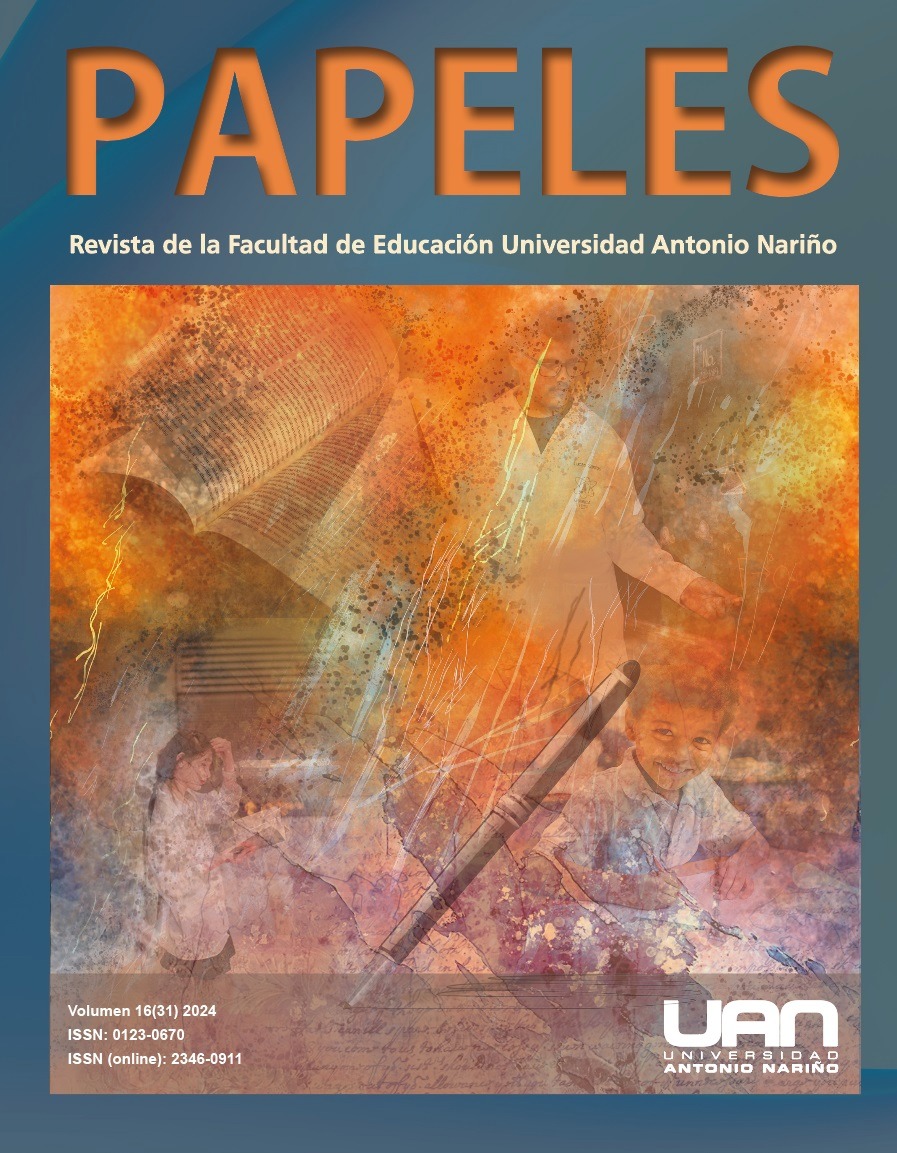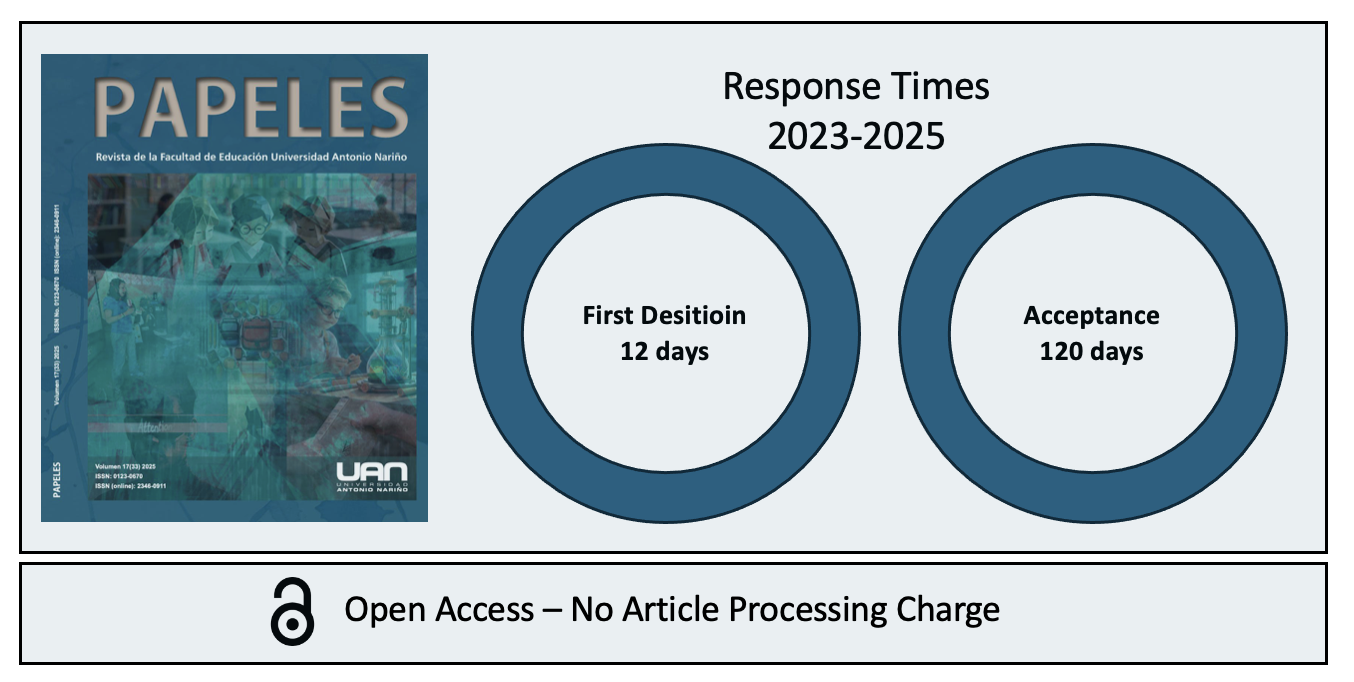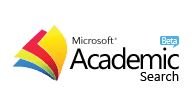Analysis of the Role of Picture Books in the Development of Language Skills in Elementary School Children
Análisis del papel de los libros álbum en el desarrollo de las habilidades de lenguaje de los niños de la educación básica primaria
DOI:
https://doi.org/10.54104/papeles.v16n31.1796Keywords:
Picturebook, language skills, multimodality, literature, illustrationAbstract
Introduction: The picturebook, understood as a reflexive object in which text and image dialogue in a complementary way, proposes an innovative didactic in the promotion and development of children’s language skills, through the acquisition of metalinguistic and metaliterary skills, and the ability to relate and comprehend the text and the image in order to enhance their learning. Methodology: This article aims to analyze the picturebook’s role as a tool for the development of language skills in Elementary School children, to revindicate it as an educational tool with great recreational and teaching potential. This by means of a thorough literature review and a narrative analysis, whose data collection tool were semi-structured interviews with Elementary School teachers, as well as to publishers, writers, and illustrators of picturebooks. Results and Discussion: These interviews, together with the previous conceptualization of the project, led to some findings on what the implementation and development of the picture book implies. Given that the perspectives analyzed were those of the actors who intervene in it from its creation as an editorial object that emerges in the dialogue between text and image; as well as the perspectives of those who use it as a tool in the classroom, discerning the role it plays in the development of language skills of elementary school children. Conclusions: Finally, the article presents the possibilities of the picturebook as a didactic tool through the comprehension reached regarding its pedagogical, aesthetic and critical thinking training function.
Downloads
References
Arbe Mateo, F. y Echeberria Sagastume, F. (1982). Contexto sociocultural y adquisición del lenguaje. KOBIE (Serie Antropología Cultural), 3, 64-72. https://www.bizkaia.eus/fitxategiak/04/ondarea/Kobie/PDF/5/Kobie_3_Antrpologia_cultural_CONTEXTO%20SOCIOCULTURAL%20Y%20ADQUISICION%20DEL%20LENGUAJE%20.pdf
Arias Cardona, A. M. y Alvarado Salgado, S. V. (2015). Investigación narrativa: Apuesta metodológica para la construcción social de conocimientos científicos. CES psicología, 8(2), 171-181. https://revistas.ces.edu.co/index.php/psicologia/article/view/3022/2427
Arriola Culajay, H. D. (2007). Manual interactivo de técnicas de ilustración digital aplicadas a la caricatura y el cómic [tesis de grado, Universidad San Carlos de Guatemala]. http://biblioteca.usac.edu.gt/tesis/02/02_2524.pdf
Atkinson, P. y Coffey, A. (2003). Encontrar el sentido a los datos cualitativos: Estrategias complementarias de investigación. Universidad de Antioquia.
Bader, B. (1976). American picturebooks from Noah’s ark to the beast within. Macmillan.
Barthes, R. (1986). Lo obvio y lo obtuso: Imágenes, gestos, voces. Paidós.
Blanco, M. (2011). Investigación narrativa: Una forma de generación de conocimientos. Argumentos, 24(67), 135-156. https://www.scielo.org.mx/pdf/argu/v24n67/v24n67a7.pdf
Chomsky, N. (2011). Language and other cognitive systems: What is special about language? Language Learning and Development, 7(4), 263-278. https://doi.org/10.1080/15475441.2011.584041
Cohen, S. (2012). Del garabato al dibujo: Una mirada diacrónica del dibujo infantil. Universidad Nacional de Tucumán.
Colombianos leen la mitad de los libros del promedio en Latinoamérica. (2020, 3 de noviembre). Forbes. https://forbes.co/2020/11/03/forbes-life/colombianos-leen-la-mitad-de-los-libros-del-promedio-en-latinoamerica/
Connelly, M. y Clandinin, J. (1995). Relatos de experiencia e investigación narrativa. En Déjame que te cuente: Ensayos sobre narrativa y educación (pp. 11-59). Laertes.
Cope, B. y Kalantzis, M. (2010). Gramática de la multimodalidad. Boletín de la Asociación Andaluza de Bibliotecarios, 25(98), 93-154. https://dialnet.unirioja.es/descarga/articulo/3616430.pdf
DeFauw, D. L. (2016). Drawing children into reading: A qualitative case study of a preschool drawing curriculum. Early Child Development and Care, 186(4), 624-641. https://doi.org/10.1080/03004430.2015.1052422
Díaz Armas, J. (2008). La imagen en pugna con la palabra. Saber (e) Educar, 13, 43-57. http://repositorio.esepf.pt/bitstream/20.500.11796/919/2/SeE_13LaImagen.pdf
Ege, O. F. (1949). Illustration as a fine art. College Art Journal, 9(1), 3-11. https://doi.org/10.1080/15436322.1949.11465908
Ezquerra, J. E. (2012). Kress, Gunther R. (2010). Multimodality: A social semiotic approach to contemporary communication. London & New York: Routledge. 213 pp. ISBN 978-0-415-32061-0. Revista Latinoamericana de Estudios del Discurso, 12(1), 124-130. https://periodicos.unb.br/index.php/raled/article/download/33495/27097
Ferreiro, E. y Teberosky, A. (2005). Los sistemas de escritura en el desarrollo del niño. Siglo XXI.
Geertz, C. (1989). El impacto del concepto de cultura en el concepto de hombre. En La interpretación de las culturas (pp. 43-59). Gedisa.
Halliday, M. A. K. (1978). Language as a social semiotic. Edward Arnold.
Halliday, M. A. K. y Matthiessen, C. (1999). Construing experience through meaning: A language-based approach to cognition. Continuum.
Hinojosa Vicencio, M.ª de los Á. (2015). Multimodalidad: Usos y estrategias para el desarrollo del lenguaje en primer y segundo nivel de transición de educación parvularia y primer año de enseñanza básica [tesis de grado, Universidad de Santiago de Chile]. https://repositorio.uchile.cl/bitstream/handle/2250/136928/Tesis%20multimodalidad.pdf?sequence=1&isAllowed=y
Kress, G. (2009). Multimodality: A social semiotic approach to contemporary communication. Routledge.
Kress, G. y Van Leeuwen, T. (1996). Reading images: The grammar of visual design. Routledge.
Kümmerling-Meibauer, B. y Meibauer, J. (2013). Towards a cognitive theory of picturebooks. International Research in Children’s Literature, 6(2), 143-160. https://doi.org/10.3366/ircl.2013.0095
Latorre Román, P. Á. (2007). La motricidad en Educación Infantil, grado de desarrollo y compromiso docente. Revista Iberoamericana de Educación, 43(7), 1-7. https://doi.org/10.35362/rie4372296
Castaño Marín, M. D. (2006). Teoría del conocimiento según Piaget. Revista Psicoespacios, 1(1), 36-46. https://revistas.iue.edu.co/index.php/Psicoespacios/article/view/14/524
Marõn Castaño, G. E. (2006). Reflexiones sobre la enseñanza de la lengua: Una aproximación socio-psicolingüística. Cuadernos de Lingüística Hispánica, 7, 187-206. https://www.redalyc.org/pdf/3222/322230192017.pdf
Mendoza Fillola, A. (2001). El intertexto lector: El espacio de encuentro de las aportaciones del texto con las del lector. Universidad de Castilla-La Mancha.
Menza Vados, A. E., Sierra Ballén, E. L. y Sánchez Rodríguez, W. H. (2016). La ilustración: Dilucidación y proceso creativo. Revista Kepes, 13(13), 265-296. https://doi.org/10.17151/kepes.2016.13.13.12
Ministerio de Cultura. (2021). Plan Nacional de Lectura, Escritura y Oralidad (PNLEO): “Leer es mi cuento”. https://www.mineducacion.gov.co/1780/articles-411450_recurso_01.pdf
Olson, D. (1994). El mundo sobre el papel. Gedisa.
Oxford University Pres. (s. f.). Synergy. En Oxford English Dictionary. https://www.oxfordlearnersdictionaries.com/definition/english/synergy
Piaget, J. (2003). El pensamiento matemático.
Reyes Torres, A., Portales Raga, M. y Bonilla , P. (2020). Multimodalidad e innovación metodológica en la enseñanza del inglés: El álbum ilustrado como recurso literario y visual para el desarrollo del conocimiento. Revista Nebrija de Lingüística Aplicada a la Enseñanza de Lenguas, 14(28), 54-77. https://doi.org/10.26378/rnlael1428377
Salisbury, M. y Styles, M. (2012). El arte de ilustrar libros infantiles: Concepto y práctica de la narración visual. Blume.
Sandoval Casilimas, C. A. (2002). Investigación cualitativa. Instituto Colombiano para el Fomento de la Educación Superior. https://panel.inkuba.com/sites/2/archivos/manual%20colombia%20cualitativo.pdf
Sipe, L. R. (1998). How picture books work: A semiotically framed theory of text-picture relationships. Children’s Literature Association Quarterly, 23(4), 55-161. https://unlvkidlit.pbworks.com/f/how+picture+books+work.pdf
Solórzano Cárdenas, S. (2022). Los bogotanos leen 4,6 libros al año, según encuesta del Observatorio de Biblored. La República. https://www.larepublica.co/ocio/los-bogotanos-leen-4-6-libros-al-ano-segun-encuesta-del-observatorio-de-bibliored-3406693
Sung, M.-Y. (2013). De la narración literaria a la narración visual: Proyecto de ilustración [tesis de maestría, Universidad Politécnica de Valencia]. https://riunet.upv.es/bitstream/handle/10251/35460/INTERIOR-TFM%20DEFINITIVO.pdf?sequence=1
Taylor, S. y Bogdan, R. (1992). Introducción a los métodos cualitativos de investigación. Paidós.
Teberosky, A. y Josep, M. (2015). Metáforas y frases hechas: “La receta de Mandrágora”. Laboratório de Educação.
Versace, S. (2016). Chomsky: Lenguaje, conocimiento y libertad. Lectulandia.
Vygotsky, L. (1995). Pensamiento y lenguaje. Fausto.
Downloads
Published
-
Abstract625
-
PDF (Español)325
How to Cite
Issue
Section
Categories
License
Copyright (c) 2024 Valentina Arango, Carlos Daniel Giraldo, José Daniel Feijoó

This work is licensed under a Creative Commons Attribution-NoDerivatives 4.0 International License.





